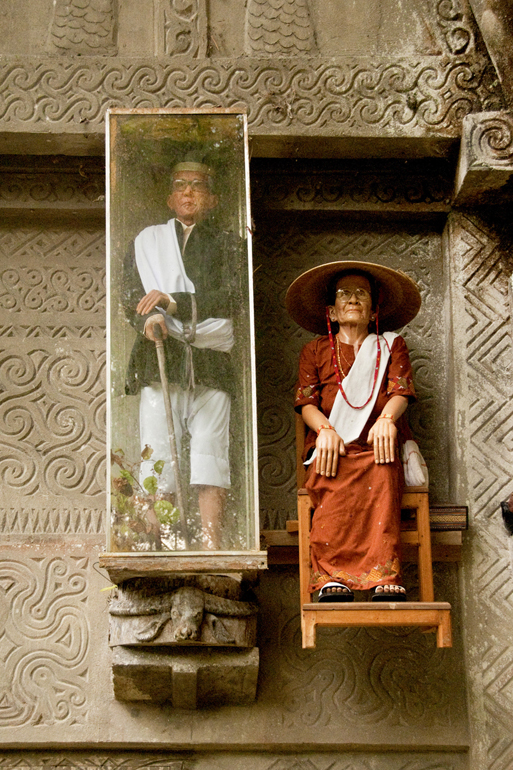
Life is either a daring adventure
or nothing at all.
Helen Keller
One of the most remote and culturally distinct people I have visited was, ironically enough, in the crowded melting pot of Indonesia. In the central highlands of Sulawesi, a large floral shaped island formerly known as the Celebes, are the Tana Toraja people. Isolated by the sea and hemmed in by imposing mountains, the Torajans have lived for centuries in a rigidly stratified caste system ruled by a small nobility. They have long resisted outside influence. And though the modern world, with roads, cell phones, and fast food is knocking at the door, the ancient past is still marvelously alive and well there. This is most evident in their religion, a blend of Christianity and ancestor worship ensconced in the world's most populous Islamic nation, with hedonistic ceremonies that celebrate life, and most especially death.
The supreme symbol of status and wealth in Tana Toraja is the buffalo, which trumps the ubiquitous scooter, the occasional car, and even the tongkonan, their traditional boat-shaped homes. Upon the death of a nobleman as many as 75 buffalo will be sacrificed at his funeral, which can last weeks or months, and will be attended by all the surrounding villages. The buffalo are provided by those indebted to the nobleman, so the number sacrificed is roughly related to his wealth and generosity while alive.
When the feasts and celebrations are finally over and the spirit has made contact with its ancestors, it is time for burial. The body will finally be placed in a crypt chiseled out of a limestone cliff, another rite of passage reserved only for the nobility. A carved likeness of the deceased, known as a tao tao, or effigy, will be placed at the entrance to his vault.